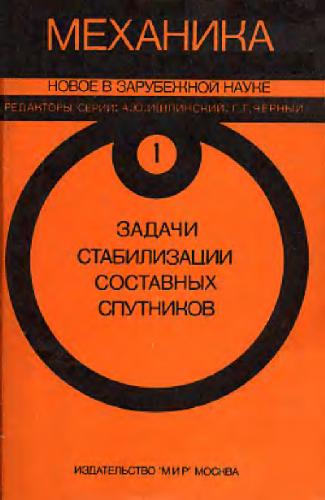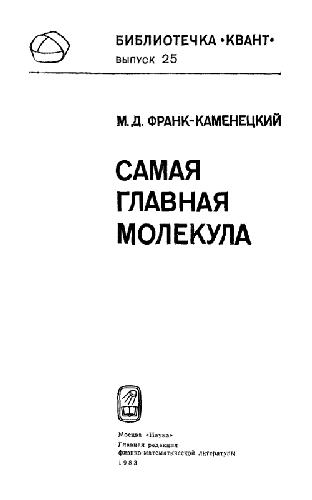Yupeng Yan, C. Kobdaj, P. Suebka9789812704818, 9812704817, 9789812706881, 9812706887
Table of contents :
CONTENTS……Page 24
Preface……Page 6
Organizing Committees……Page 8
Patronages and Sponsorships……Page 10
Group Photo……Page 12
Conference Program……Page 14
Thematic Melodies of Twentieth Century Theoretical Physics: Quantization, Symmetry and Phase Factor Chen Ning Yang……Page 32
1. Quantization……Page 33
2. Symmetry……Page 34
3. Phase Factor……Page 35
4. Development……Page 37
FEW-NUCLEON SYSTEMS: THREE-BODY FORCES AND FEW-NUCLEON DYNAMICS……Page 40
1. Introduction……Page 42
3.1. Two-body Coulomb amplitude……Page 43
3.2. Two-body Nuclear amplitudes……Page 44
3.3. Three-body Nuclear amplitudes……Page 45
References……Page 46
2. Momentum Space Representation of Yakubovsky Equations in 3-D approach……Page 47
3. Choosing Coordinate Systems……Page 49
References……Page 50
Momentum-Space Treatment of Coulomb Interaction in Three-Nucleon Breakup Reactions A . Deltuva, A . C. Fonseca & P. U. Sauer……Page 51
References……Page 54
Quasilinear and WKB Solutions in Quantum Mechanics R. Krivec, V. B. Mandebaweig & F. Tabakin……Page 55
References……Page 58
Scaling in Few-Body Nuclear Physics L. Tomio, T. Frederico, V. Tamdteo, M. T. Yamashita & A. Delfino……Page 59
References……Page 63
1. Introduction……Page 64
2. Experiment……Page 65
3. Result and Discussion……Page 66
References……Page 67
1. Introduction……Page 68
2.2. Application CEM to Finding Resonance States……Page 69
3.1. Outline of FRE……Page 70
References……Page 71
The Treatment of Coulomb Interaction in the Description of Three-Nucleon Reactions with Two Protons A . Deltuva, A. C. Fonseca & P. U. Sauer……Page 72
References……Page 76
Three-Nucleon Force Effects in Observables for dp Breakup at 130 MeV A. Biegun, B. KLos, A. MicherdziLska, E. Stephan, W. Zipper, K. Bodek, J. Golak, St. Kistryn, J. Kuroi-ZoLnierczuk, R. Skibin’ski, R. Sworst, H. Witaha, J. Zejma, A. Kozela, K. Ermisch, N. Kalantar-Nayestanaki, M. Kis, M. Mahjour-Shafiei W. Glockle, H. Kamada, E. Epelbaum, A. Nogga, P. Sauer & A. Deltuva……Page 77
2. Experimental Setup and Data Analysis……Page 78
References……Page 80
2. Model 3NFs……Page 81
3.1. Notes on the numerical calculations……Page 82
3.3. Breakup observables……Page 83
4. Summary……Page 84
References……Page 85
2. Standard AMD Method……Page 86
3. A New AMD Trial Wave Function……Page 87
4. Simulation Results……Page 88
References……Page 89
1. Anomalies in pd radiative capture……Page 90
2. Anomalies in pd breakup reaction……Page 93
References……Page 94
Experimental Investigations of Three-Body Systems at KVI N. Kaluntar- Nayestanaki……Page 95
Elastic Deuteron-Proton Scattering……Page 96
Deuteron-Proton Capture……Page 98
References……Page 99
1. Introduction……Page 100
2. Formulation……Page 101
3. Results……Page 102
4. Outlook……Page 103
References……Page 104
1. Introduction……Page 105
2. The Nd Break-Up Amplitude……Page 106
3. The Semi-exclusive Proton-Deuteron Break-Up Reaction……Page 107
References……Page 109
2. Resonance structure……Page 110
3. Energy distributions……Page 112
References……Page 114
HADRON STRUCTURE AND QCD……Page 116
1. Introduction……Page 118
2.1. N and A masses……Page 119
2.3. Other Excited States……Page 120
3. Possible Pentaquarks……Page 122
4. Conclusion……Page 123
Acknowledgments……Page 124
References……Page 125
1. Introduction……Page 126
3. Numerical Results and Discussions……Page 127
References……Page 129
Proton Form Factor Measurements at Jefferson Lab C. F. Perdrisat, E. J. Brash, M. K. Jones, L. Pentchev, V. Punjabi & F. R. Wesselmann……Page 130
References……Page 134
2. Experiment……Page 135
3. Results……Page 137
References……Page 139
1. Introduction……Page 140
2. Experiment……Page 141
4. Summary……Page 142
References……Page 143
1. Introduction……Page 144
2. Theory: I. Quark Models……Page 145
3. Theory: II. QCD Sum Rules……Page 146
4. Theory: 111. Lattice QCD……Page 147
5. Conclusion……Page 148
References……Page 149
Two-Photon Exchange Contribution to the Elastic e-p Scattering at Large Momentum Transfer within a Partonic Approach Y. C. Chen & M. Vanderhaeghen……Page 150
References……Page 154
Probing the Magnetic Dipole Moment of the +(1232) via p 0p Reaction W. T. Chiang, S. N. Yang, M. Vanderhaeghen & D. Drechsel……Page 155
References……Page 159
2. Formulation……Page 160
3.2. AK State……Page 162
3.3. N State……Page 163
References……Page 164
1. Introduction……Page 165
2.1. Masses and Widths……Page 166
2.2.2. Radiative Decays……Page 167
2.2.4. Hadronic Decays Above the DD Threshold……Page 169
2.3.1. The Radial Excitation of the Charmonium Ground State, or c(2lS0)……Page 170
2.3.2. The Singlet P-wave State of Charmonium, hc(llP1)……Page 171
3.2. The Mystery of X(3872)……Page 172
4. Bottomonium……Page 174
5. The Timelike Form Factors of Pion, Kaon, and Proton……Page 175
References……Page 176
1. Introduction……Page 178
4. Strangeness in the nucleon……Page 181
6. Conclusion……Page 184
References……Page 186
1. Introduction……Page 187
2.1. q3 -qq configuration……Page 188
2.2. qq-qq-S (Jafle- Wilczek) configuration……Page 189
2.3. qq-qqS (Karliner-Lipkin) configuration……Page 190
References……Page 191
EXOTIC HADRONS AND ATOMS……Page 192
2. Lattice Simulations……Page 194
3. Results……Page 195
Acknowledgments……Page 196
References……Page 197
1. Introduction……Page 198
2. PD Interactions in Terms of XN Interactions……Page 199
3. Results and Discussions……Page 200
References……Page 201
1. Introduction……Page 202
2. Cascade Model Involving Electron Refilling Process……Page 203
3. Results and Discussion……Page 204
References……Page 205
1. Introduction……Page 206
2. B Decay Amplitudes and Final State Interactions……Page 207
3. Results and Conclusions……Page 208
References……Page 210
1. Introduction……Page 211
2. Experimental Evidence on O+……Page 212
4. Search at COSY-TOF……Page 213
6. Summary and Outlook……Page 214
References……Page 215
2. Mesonic Atoms……Page 216
2.2. Kaonic atoms……Page 217
3. Search for Kaonic Nuclei……Page 218
References……Page 220
1. Introduction and Results……Page 221
References……Page 224
EFFECTIVE FIELD THEORY IN FEW-BODY PHYSICS……Page 226
1. Introduction……Page 228
2. Equation of State……Page 229
3. Results and Discussion……Page 230
References……Page 232
1. Introduction……Page 234
3. Result and Discussion……Page 235
References……Page 238
2. Neutron-Neutron Fusion, nn -+ de-D,……Page 240
3. np -+ dy at the BBN Energies……Page 242
References……Page 244
Nuclear Forces and Chiral Symmetry R. Higa, M. R. Robilotta & C. A. da Rocha……Page 245
References……Page 249
ELECTROMAGNETIC AND WEAK PROCESSES IN FEW-BODY SYSTEMS……Page 250
2. The Basic Idea……Page 252
3. Application to aa RGM……Page 254
4. Application to the Quark-Model Baryon Baryon Interactions……Page 255
References……Page 256
1. Introduction……Page 257
2. The BLAST Experiment……Page 258
3. Results……Page 259
References……Page 260
2. Isobar Model……Page 261
3. Result and Discussion……Page 262
4. Conclusion……Page 264
References……Page 265
1. Introduction……Page 266
2. Density-Dependent Cluster Model (DDCM)……Page 267
3. Numerical Results and Discussions……Page 268
References……Page 270
1. Introduction……Page 271
3. The Experiments at the Jefferson Laboratory……Page 272
4. The Results……Page 274
References……Page 275
1. Introduction……Page 276
Contributions with 27 and N* intermediate states……Page 277
Correction at the weak vertex……Page 278
References……Page 279
1. Newtonian Potentials from Quantum Field Theory……Page 280
2. Electromagnetic Form-Factors and V(T)……Page 281
3. Applications……Page 282
References……Page 283
1. Introduction……Page 284
2. The BLAST Experiment……Page 285
3. Preliminary Results……Page 287
References……Page 288
1. Introduction……Page 289
2. Calculations in the Point Form……Page 290
References……Page 293
Energy-Dependent Phase-Shift Analyses for Elastic p p Scattering in COSY-Data Region J. Nagata, H. Yoshino & M. Matsuda……Page 294
References……Page 297
1. Introduction……Page 298
3. Results and Discussion……Page 299
References……Page 302
1. Strangeness in the Nucleon……Page 303
2. The A4 Experimental Setup and Analysis……Page 304
References……Page 307
FEW-BODY DYNAMICS IN ATOMS, MOLECULES, BOSE-EINSTEIN CONDENSATES AND QUANTUM DOTS……Page 308
1. Introduction……Page 310
2. Generalization to Four-Body Scattering Process……Page 311
References……Page 313
Unified Theory of Scattering for Arbitrary Potentials A. S. Kadyrov, I. Bray, A. M. Mukhamedzhanov & A. T. Stelbovica……Page 314
References……Page 317
1. The Fractional Parentage Coefficients……Page 318
2. Application of FPC Technique for Spinor Bose-Einstein Condensates……Page 321
3. Conclusion……Page 323
References……Page 324
FEW-BODY APPROACHES TO UNSTABLE NUCLEI, NUCLEAR ASTROPHYSICS AND NUCLEAR CLUSTERING ASPECTS……Page 326
2. Framework……Page 328
3. Cluster Structures of l6JsO……Page 329
References……Page 331
1. Introduction……Page 332
2. Formulation……Page 333
3. Results……Page 334
References……Page 335
Isotopic Composition as a Signature for Different Processes Leading to Fragment Production in Midperipheral Ni + Al, Ni, Ag Collisions at 30 MeV/Nucleon P. M. Milazzo, G. V. Margagliotti, R. Rui, G. Vannini, N. Colonna, F. Gramegna, P. F. Mastinu, C. A……Page 336
3. Dynamical and Statistical IMF Production……Page 337
References……Page 339
1. Searches of Eta-Mesic Nuclei……Page 341
2. Delay Times in Eta-Nucleus Scattering……Page 342
3. Results and Discussions……Page 343
References……Page 344
1. Introduction……Page 346
2. Two Body Potentials……Page 347
4. The Effective Potential……Page 348
References……Page 350
HYPERNUCLER PHYSICS: HADRON-HYPERON, HYPERON-HYPERON INTERACTIONS……Page 352
1. Introduction……Page 354
2. Interactions and Method……Page 355
4. Summary……Page 356
References……Page 357
1. Introduction……Page 358
2. Semiclassical Distorted Wave Model for Inclusive Spectrum……Page 359
3. Description of the Target Nucleus, X-, Pions and Kaons……Page 360
5. Summary……Page 361
References……Page 362
1. Introduction……Page 363
2. Experimental results……Page 364
3. Discussion……Page 365
References……Page 367
1. Introduction……Page 368
2. SU(3)f One Boson Exchange Potential and the 3H……Page 369
3. The NA – N Coupling – A Study……Page 370
4. Conclusions……Page 371
References……Page 372
2. Method……Page 373
4. NNNE hypernuclei……Page 374
5 . Pentaquark System……Page 376
References……Page 377
OTHERS……Page 378
1. Introduction……Page 380
2. Form Factors in Different Forms: Single-Particle Approximation……Page 381
3. Role of Space-Time Translation Invariance……Page 382
References……Page 383
Dalitz-esque Treatment of New Heavy Particle Pair Production at the LHC M. Bisset……Page 384
References……Page 390
1. Introduction……Page 391
2. Results……Page 392
3. Conclusion……Page 393
References……Page 394
1. Introduction……Page 395
2. Baryon- S trangeness Correlations……Page 396
3. Elliptic Flow: Fluctuations and Non-Flow Effects……Page 397
4. Conclusion……Page 398
References……Page 399
2. Experimental Details……Page 400
3. Results and Discussion……Page 401
Acknowledgments……Page 402
References……Page 403
1. Introduction……Page 405
3. Meson Physics……Page 406
5. Nucleon-Deuteron Scattering and Reactions……Page 407
6. Electromagnetic Probes……Page 408
7. Electroweak……Page 409
8. Strangeness Physics……Page 410
9. The Pentaquark……Page 411
Acknowledgments……Page 412
List of Participants……Page 414
Author Index……Page 422







Reviews
There are no reviews yet.